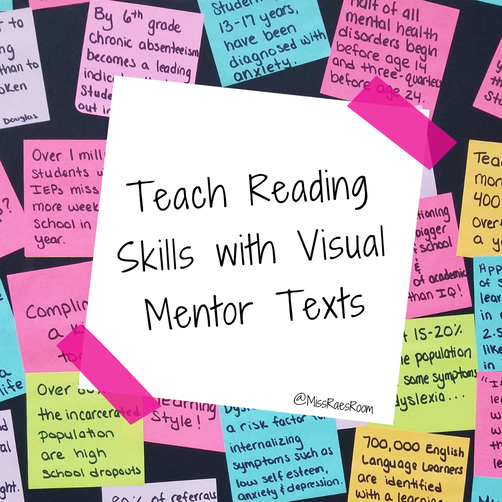|
How do I find the time to teach Science and Social Studies???
How do I find the time to cover all of the curriculum, nevermind actually teach it??? How do I get my students to work cooperatively together??? How do I get my students to work together to learn together??? Well, I have the answer. Get your students to work together to learn together using the jigsaw reading teaching strategy! Plan: Every student will work in an Expert Group to become an “Expert” on a topic or skill. These students will all read the same text together, determine the main idea, and then, use their expert knowledge to teach the students in their Home Groups about the topic or skill. First, make your Expert Groups Expert Groups should consist of 3-5 students who similar reading abilities. Essentially, these should be homogeneous groups. Next, find a set of reading selections on the content you are teaching. For example, if you are studying Plants, perhaps one Expert Group reads about the parts of the plants and their functions, another Expert Group will receive a text about the life cycle of a plant, and the last Expert Group will read a text about adaptations of plants. These should be short texts. Think the length of an article in a magazine! Note: It is important that the reading material assigned is at appropriate instructional levels (90–95% reading accuracy). I use sections from textbooks, chapters from novels, or websites with FREE non-fiction articles like...Newsela (https://newsela.com/) or ReadWorks (https://www.readworks.org/) Next, make your Home Groups. There should be one “Expert” from each Expert Group in each Home Group.
Launch:
Explain to students that they will be working in different cooperative groups to become “Experts” on a topic or skill Introduce the strategy and/or the topic to be studied. Explore: Then, group students into their Expert Groups and provide them with their assigned text to read. Give students an appropriate amount of time to read the assigned text. Provide students with highlighters, sticky notes, and/or a graphic organizer for notetaking. It should be explained to students that while reading their texts in their Expert Groups, they should be reading for main ideas, supporting details, and key terms. It is going to be the Experts’ jobs to teach other students about what they read. After the Experts have finished reading the text, students should work together in their Expert Groups make sure that all members of the group fully understand the ideas presented and are able to accurately summarize their learning. Note: You may provide key questions and/or a graphic organizers to focus the discussion. Next, students move to their Home Groups. While in their Home Groups, each student (or Expert) will report the information learned from their Expert text (or the text they read in their Expert Group). It is important to remind students that Home Group members are responsible to learn ALL content from one another. Using our Plant example, each Home Group should have one student from the Expert Group that read about the parts of the plants and their functions, one student from the Expert Group that read about the life cycle of a plant, and one student from the Expert Group that read about adaptations of plants. Each member of the Home Group is expected to learn about each topic or skill learned by the Expert. You may wish to prepare a summary chart or graphic organizer for each Home Group as a guide for organizing the Experts' information into a report of some sort. Summarize: Facilitate a whole class discussion to summarize the students’ learning. Ask Home Groups to report out about what they learned from each other!
OR try this variation to the Jigsaw Reading Cooperative Learning Strategy:
And there you have it!
You taught your students to work together to learn together! (Oh, and you taught content you didn’t even know you had time to teacher AND you did it all in one lesson!) Happy Teaching! Miss Rae
1 Comment
Mentors serve as good examples of skills for our students. Teachers are mentors. Parents are mentors. Books are mentors. No, you did not read that incorrectly!
For centuries, we have been reading aloud to kids. These books serve as mentors for all types of skills. Mentor texts entered educational lingo as a way to refer to the books that we read aloud to students as models for good writing. Today, we are learning to write non-fiction pieces. First, we will begin by looking at the way good non-fiction writers write by reading one of Gail Gibbons’ science texts! Later, we will practice writing as non-fiction writers. We will share and discuss our trials as we draft! A few years ago mentor texts reinvigorated as a way to teach students reading skills too. Today, we will be learning about summarizing. We will begin by reading the text Where The Wild Things Are aloud. We will then summarize the story using a graphic organizer. We will do this as a whole group, and then, you will practice the skill using your independent reading books. After that, we will gather together as a group and summarize (no pun intended) what we learned while practicing our skill. This sounds like an ideal lesson, right?! If I were looking to get observed, this may be the lesson plan I use, right?! Hmmm...but what about Tommy? There is no way he will sit for that long and only have 2 possible movement breaks! And what about Janey? She hates when I read aloud because she can’t sit still and always asks to use the bathroom during read alouds. And now that I think about it, there are always 3 of them that ask for a bathroom break whenever I read. Plus, these days I can only seem to hold their attention for less than five minutes? Sound like every teacher in the world? There are always those classes that cause you to let out an audible sigh at the end of every day as you flop your tired body and mind into your chair, only to become quickly overwhelmed by the stacks of to-do’s on your desk! Today’s learners require a circus act to hold their attention. They have grown up with technology at their fingertips; a world that moves faster than any superhero they have ever known! Visual mentor texts are a great tool for these learners! They provide a concise context for targeting literacy skills in the form of a visual mentor text which means they hold our students ATTENTION!
Visual Mentor Texts in READING… You can teach all reading skills from inferencing to theme using Pixar short films. For example, the Pixar Short Films For the Birds (2000) is a great visual mentor text to teach theme. A large dopey bird who wants to join in with a group of smaller birds. When he sits on their wire, the smaller birds become angry, pecking the larger bird’s feet. He drops, causing the wire to slingshot. The large bird falls to the ground intact while the smaller birds land minus some feathers! What is the message (Trick: THE MEssage) or theme?
Want to teach the skill of inferencing? One Man Band (2005) is a Pixar Short Films that can be used to teach inferencing AND has the most adorable little girl.
Visual Mentor Texts in WRITING…
Commercials can be another form of visual texts. Watch "Unsung Hero" (Official HD) TVC Thai Life Insurance 2014. The commercial profiles a seemingly poor man who fills his life with good deeds, changing the lives of others and making him rich with happiness! Tell the unsung hero’s story! AND use visual WORDLESS mentor texts in writing as prompts! Use visual mentor texts in writing that are lacking a conclusion and write one! Visual Mentor Texts in SCIENCE… Use these animations in science! Watch a short and ask: how many simple machines did you notice? What would be impossible in real life? Watch a portion of the movie Cloudy With a Chance of Meatballs (2009) to prompt a discussion about scientists or hypothesis! Visual Mentor Texts in HISTORY… Use visual mentor texts in history class. Relate the stories to concepts and people of our past to help make connections. The Pixar Short Films La Luna (2011) tells the story of a young boy who reaches for the moon. He is unsure of the lead to follow - his father’s or his grandfather’s. The film demonstrates the theme of finding one’s own path and can be related to many great historical leaders (MLK, Amelia Earhart…) and movements (the Underground Railroad, colonization). Visual Mentor Texts in SEL… Social Emotional Learning has become a core curriculum for today’s classrooms. As a result, SEL needs to be explicitly taught in isolation AND infused across the curriculum. Many of the Pixar Short Films examples I have shared have an SEL component. For the Birds prompts a discussion around bullying, differences, following the crowd, and the list goes on. One Man Band can incite a discussion around competition. The perseverance of the main character in Cloudy With a Chance of Meatballs demonstrates grit! La Luna is a great example of learning from the past. Warning! This does NOT mean I want you to throw out your picture books! One of my favorite moments is watching a middle schooler melt into a pile of sweet innocence as a teacher reads aloud one of their childhood favorites! However, there are those times, when you need a stronger strategy! Because unlike technology, teachers DO have superpowers! By Miss Rae |
CategoriesAll Comprehension CoPlanning CoTeaching Directed Reading DIY Fluency Fountas & Pinnell Graphic Organizers Guided Reading Lesson Planning Multi-Tiered Systems Of Support Phonological Awareness RAN Read And Respond Reading Reading Assessments Reading Comprehension Response To Intervention RTI Science Of Reading Science Of Reading For Special Education Teachers Special Education Special Education Eligibility Special Education Lesson Planning Teaching Strategy Visualizing & Verbalizing Visual Texts Vocabulary Writing Writing In Response To Reading |











 RSS Feed
RSS Feed